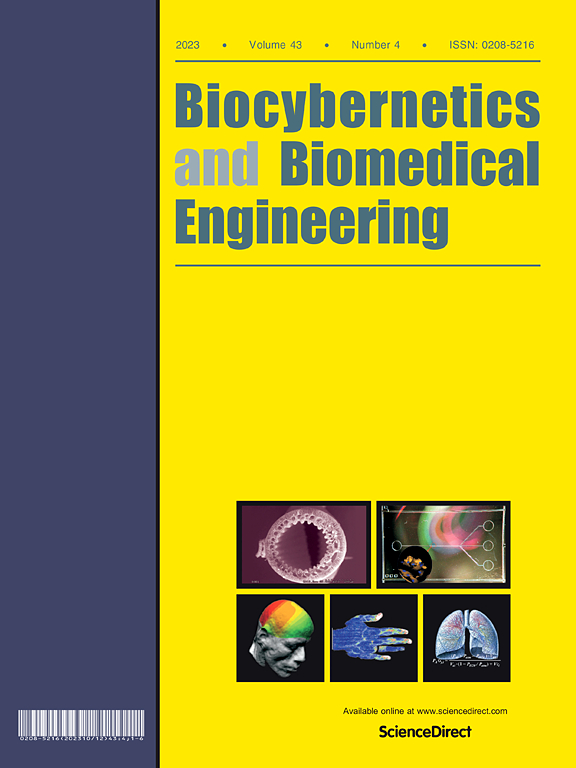Hemodynamic simulation for plantar arteries by anatomical structure based mathematical model
IF 6.6
2区 医学
Q1 ENGINEERING, BIOMEDICAL
引用次数: 0
Abstract
Diabetic foot is a kind of common complications in diabetic patients, manifesting as ischemic lesions in plantar tissue. The plantar tissue ischemia can be estimated by the perfusion of plantar blood flow. Currently, it lacks effective methods to monitor and assess plantar blood flow perfusion in practice and detailed information is not available. This study intends to address this problem from the view of mathematical modelling. It aims to provide quantitative approach to investigate the risk of ischemia in diabetic foot by simulating the hemodynamic status along the plantar vascular network. A simplified topological structure map of the main plantar arteries was established considering the anatomical structure and physical data of each vessel. Aided by bond graph technology, a Poiseuille’s law based hemodynamic model of the plantar vessels was constructed. The model simulated the blood flow distribution in the feet of healthy individuals and diabetic patients. Compared with healthy individuals, diabetic patients show increased plantar blood pressure and decreased blood supply. The reduction in blood flow on the lateral side of the foot is greater than on the medial side in diabetic patients. The study marks the first application of vascular modeling in the plantar region, providing a quantitative method for investigating foot hemodynamics in diabetic patients and offering new potential for assessing the progression of diabetic foot and the risk of tissue ulceration.
基于解剖结构数学模型的足底动脉血流动力学模拟
糖尿病足是糖尿病患者常见的一种并发症,表现为足底组织缺血性病变。足底血流灌注可以判断足底组织缺血程度。目前,在实践中缺乏有效的足底血流灌注监测和评估方法,也没有详细的资料。本研究拟从数学建模的角度来解决这一问题。目的通过模拟足底血管网的血流动力学状态,为研究糖尿病足缺血风险提供定量方法。结合各血管的解剖结构和物理数据,建立了简化的足底动脉拓扑结构图。利用键合图技术,建立了基于泊泽维尔定律的足底血管血流动力学模型。该模型模拟了健康个体和糖尿病患者足部的血流分布。与健康人相比,糖尿病患者足底血压升高,血供减少。糖尿病患者足外侧血流量的减少大于内侧血流量的减少。该研究标志着血管建模在足底区域的首次应用,为研究糖尿病患者足部血流动力学提供了一种定量方法,并为评估糖尿病足的进展和组织溃疡风险提供了新的潜力。
本文章由计算机程序翻译,如有差异,请以英文原文为准。
求助全文
约1分钟内获得全文
求助全文
来源期刊

Biocybernetics and Biomedical Engineering
ENGINEERING, BIOMEDICAL-
CiteScore
16.50
自引率
6.20%
发文量
77
审稿时长
38 days
期刊介绍:
Biocybernetics and Biomedical Engineering is a quarterly journal, founded in 1981, devoted to publishing the results of original, innovative and creative research investigations in the field of Biocybernetics and biomedical engineering, which bridges mathematical, physical, chemical and engineering methods and technology to analyse physiological processes in living organisms as well as to develop methods, devices and systems used in biology and medicine, mainly in medical diagnosis, monitoring systems and therapy. The Journal''s mission is to advance scientific discovery into new or improved standards of care, and promotion a wide-ranging exchange between science and its application to humans.
 求助内容:
求助内容: 应助结果提醒方式:
应助结果提醒方式:


